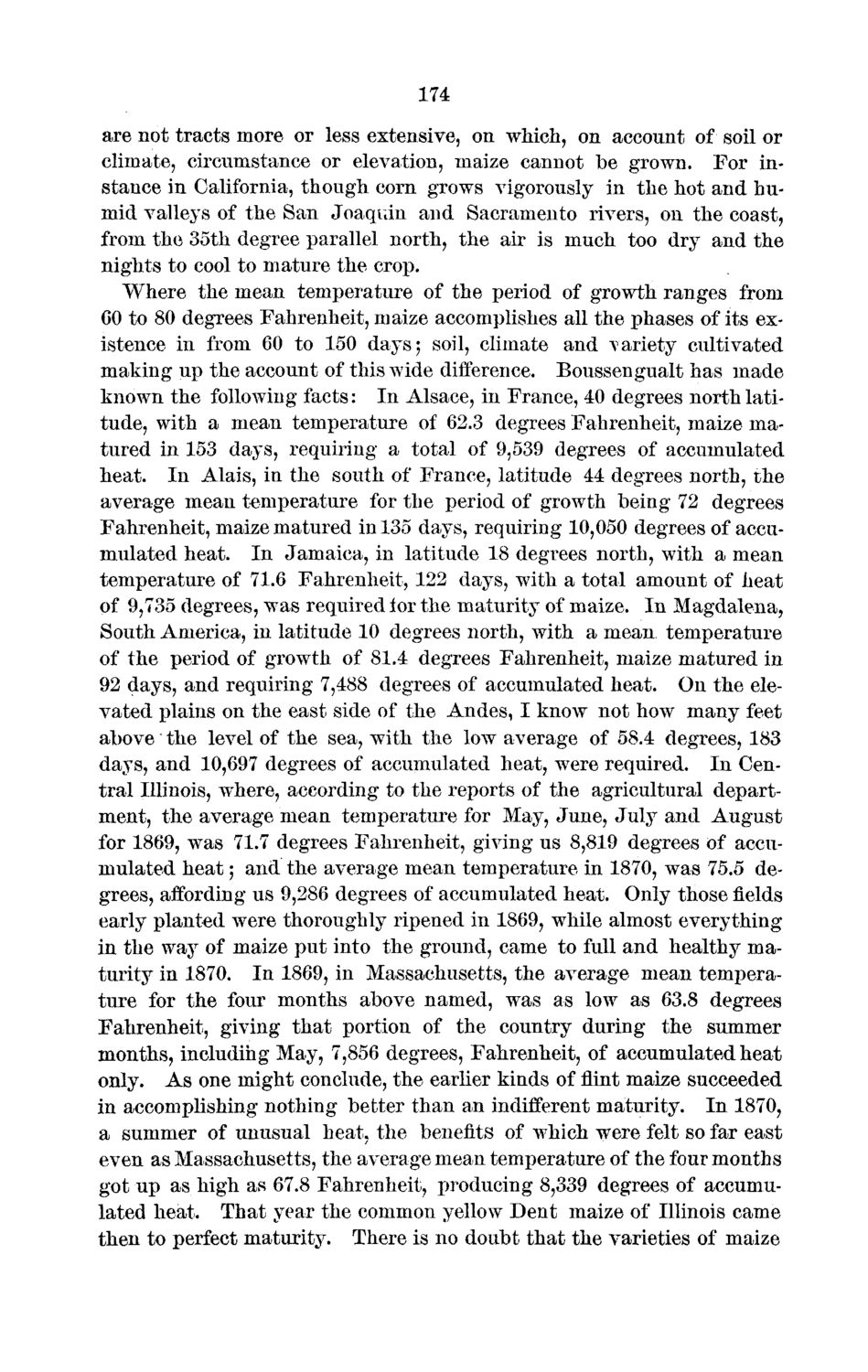| |
| |
Caption: Board of Trustees Minutes - 1872
This is a reduced-resolution page image for fast online browsing.

EXTRACTED TEXT FROM PAGE:
174 are not tracts more or less extensive, on which, on account of soil or climate, circumstance or elevation, maize cannot be grown. For instance in California, though corn grows vigorously in the hot and humid valleys of the San Joaquin and Sacramento rivers, on the coast, from the 35th degree parallel north, the air is much too dry and the nights to cool to mature the crop. Where the mean temperature of the period of growth ranges from C to 80 degrees Fahrenheit, maize accomplishes all the phases of its exO istence in from 60 to 150 days; soil, climate and variety cultivated making up the account of this wide difference. Boussengualt has made known the following facts: In Alsace, in France, 40 degrees north latitude, with a mean temperature of 62.3 degrees Fahrenheit, maize matured in 153 days, requiring a total of 9,539 degrees of accumulated heat. In Alais, in the south of France, latitude 44 degrees north, the average mean temperature for the period of growth being 72 degrees Fahrenheit, maize matured in 135 days, requiring 10,050 degrees of accumulated heat. In Jamaica, in latitude 18 degrees north, with a mean temperature of 71.6 Fahrenheit, 122 days, with a total amount of heat of 9,735 degrees, was required lor the maturity of maize. In Magdalena, South America, in latitude 10 degrees north, with a mean temperature of the period of growth of 81.4 degrees Fahrenheit, maize matured in 92 days, and requiring 7,488 degrees of accumulated heat. On the elevated plains on the east side of the Andes, I know not how many feet above the level of the sea, with the low average of 58.4 degrees, 183 days, and 10,697 degrees of accumulated heat, were required. In Central Illinois, where, according to the reports of the agricultural department, the average mean temperature for May, June, July and August for 1869, was 71.7 degrees Fahrenheit, giving us 8,819 degrees of accumulated heat 5 and the average mean temperature in 1870, was 75.5 degrees, affording us 9,286 degrees of accumulated heat. Only those fields early planted were thoroughly ripened in 1869, while almost everything in the way of maize put into the ground, came to full and healthy maturity in 1870. In 1869, in Massachusetts, the average mean temperature for the four months above named, was as low as 63.8 degrees Fahrenheit, giving that portion of the country during the summer months, including May, 7,856 degrees, Fahrenheit, of accumulated heat only. As one might conclude, the earlier kinds of flint maize succeeded in accomplishing nothing better than an indifferent maturity. In 1870, a summer of unusual heat, the benefits of which were felt so far east even as Massachusetts, the average mean temperature of the four months got up as high as 67.8 Fahrenheit, producing 8,339 degrees of accumulated heat. That year the common yellow Dent maize of Illinois came then to perfect maturity. There is no doubt that the varieties of maize
| |